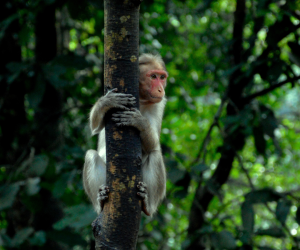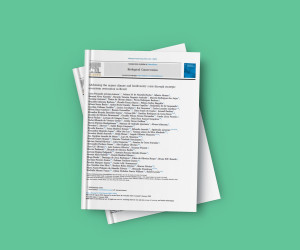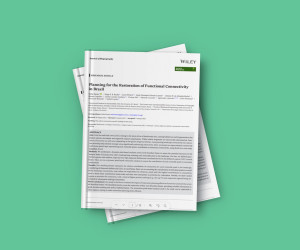News > News
09.11.17
Ecological restoration success is higher for natural regeneration than for active restoration in tropical forests
Restoration of deforested and degraded forest areas can be accomplished through a wide range of activities. At one end of the spectrum are active restoration interventions, such as planting of nursery stock; at the other end are more passive interventions, such as spontaneous or assisted natural regeneration.
Although active interventions are generally favored by practitioners and policy-makers, natural regeneration has been shown to be the most cost-effective approach for recovering biodiversity, ecological processes, and ecosystem services under favorable ecological conditions. Most of this evidence is driven by the substantially lower cost of natural regeneration relative to active restoration. Until now, no robust comparisons of ecological benefits between active restoration and natural regeneration outcomes were made for tropical forest regions, where large-scale restoration efforts are needed to ensure delivery of ecosystem services and to protect biodiversity.
In the paper “Ecological restoration success is higher for natural regeneration than for active restoration in tropical forests,” published in 8th November in Science Advances, Renato Crouzeilles, research at the International Institute for Sustainability (IIS), and his colleagues posed the critical question: Is natural regeneration the most beneficial approach to achieve tropical forest restoration success for biodiversity and vegetation structure?
To fill this knowledge gap, Crouzeilles and colleagues conducted a global meta-analysis of the most comprehensive dataset gathered to date on tropical forest restoration success, encompassing 133 primary studies spread across 115 study landscapes, and contained 1,728 quantitative comparisons between reference (e.g. old-growth forests) and restored systems.
Because forest restoration success is influenced by many confounding factors, the analysis controlled for four key factors known to influence the recovery of biodiversity and vegetation structure: forest amount, precipitation, time elapsed since restoration started, and past disturbance.
Crouzeilles says: “Restoration may not reach complete success, but biodiversity and vegetation structure were 34–56% and 19–56% higher in natural regeneration than in active restoration systems, respectively, but only after controlling for these four key biotic and abiotic factors. These findings suggest that lower cost approaches to restoring biodiversity and vegetation structure in tropical forests can actually be more effective than active restoration.”
“Our study challenges the widely held notion that natural regrowth forests offer low conservation value and that restoration strategies should preferentially favor active restoration. This mistaken notion may have arisen due to the lack of controlled biotic and abiotic factors and the short time frame for monitoring forest restoration.”
Cruzeilles cautions that “our study does not claim that natural regeneration is always the most cost-effective restoration approach. When conditions are unsuitable for natural regeneration or when particular tree species are needed, active tree planting is recommended. Moreover, biodiversity responses were based primarily on species abundance and richness, which recover far more quickly than species composition.”
“One of the major international and national policy priorities for the upcoming years is to align the identified patterns of biophysical and ecological conditions where each or both restoration approaches are more successful, cost-effective and compatible with socio-economic incentives for enabling scaling up tropical forest restoration. Clearly, both approaches are urgently needed to achieve ambitious global forest restoration targets.”
Among the major findings of this study:
- Restoration success was 7–39% and 7–51% lower in natural regeneration or active restoration than in reference systems for biodiversity and vegetation structure, respectively.
- However, restoration success was 34–56% and 19–56% higher in natural regeneration than in active restoration systems for biodiversity and vegetation structure, respectively, after controlling for key biotic and abiotic factors (forest amount, precipitation, time elapsed since restoration started, and past disturbance).
- The biotic and abiotic factors must be controlled when comparing restoration approaches to avoid misleading results.
Crouzeilles says that their findings should not be applied uncritically. “There will be areas that are unsuitable for natural regeneration and where active restoration is the only suitable approach. In addition, mixing both restoration approaches might be key to attaining a richer species pool.”
One factor that was not controlled for in this study was the socio-economic context where natural regeneration occurred. “Socio-economic factors aligned with biotic and abiotic factors determine where natural regeneration occurs.”
“Large-scale forest landscape restoration will therefore be reached only if cost-effective approaches are spatially identified and competition with agricultural land uses is minimized.”
For additional information: Renato Crouzeilles – r.crouzeilles@iis-rio.org
To read the full article go to http://www.iis-rio.org/en/publicacoes or http://advances.sciencemag.org/content/3/11/e1701345






